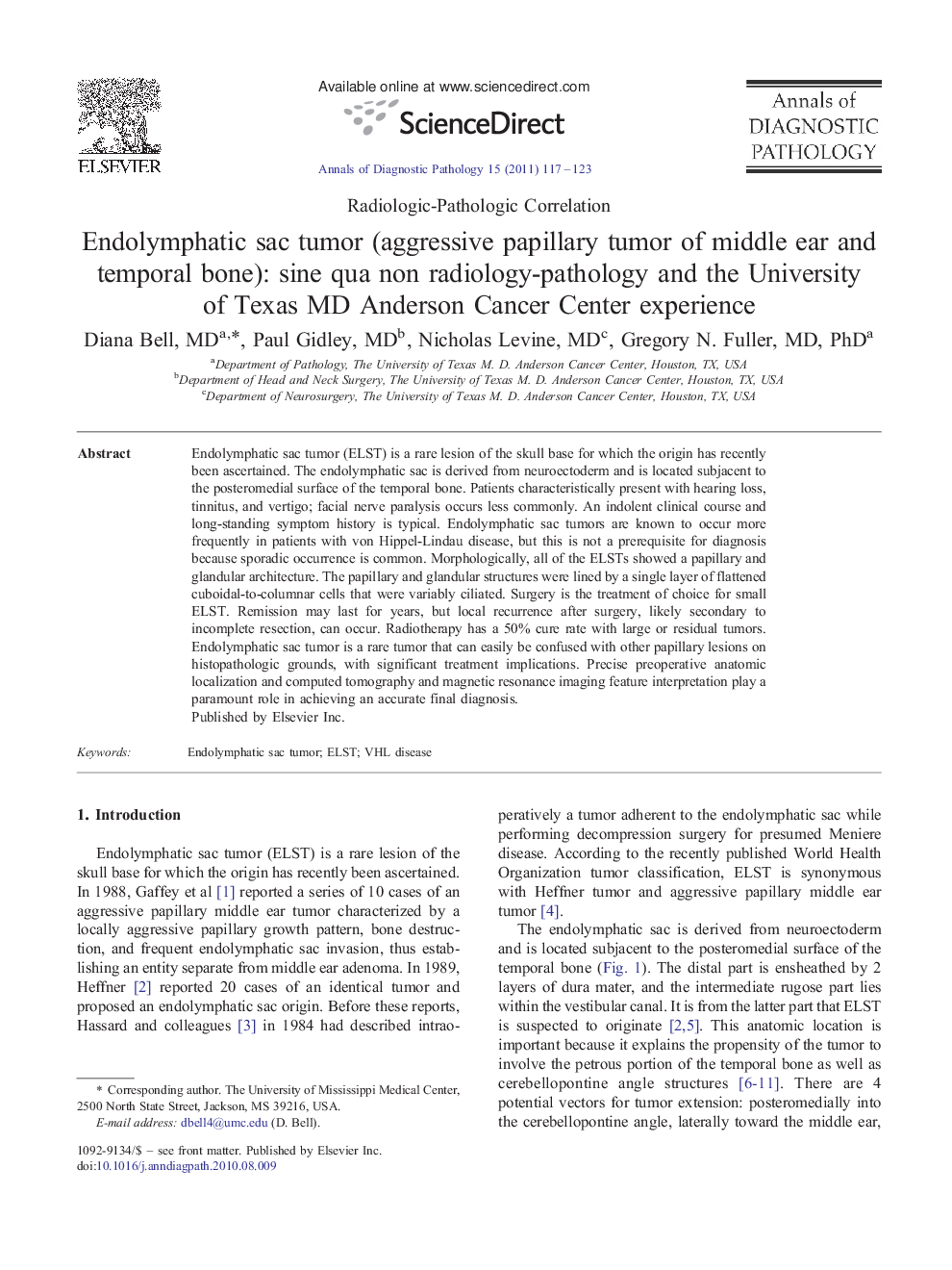| Article ID | Journal | Published Year | Pages | File Type |
|---|---|---|---|---|
| 4130244 | Annals of Diagnostic Pathology | 2011 | 7 Pages |
Endolymphatic sac tumor (ELST) is a rare lesion of the skull base for which the origin has recently been ascertained. The endolymphatic sac is derived from neuroectoderm and is located subjacent to the posteromedial surface of the temporal bone. Patients characteristically present with hearing loss, tinnitus, and vertigo; facial nerve paralysis occurs less commonly. An indolent clinical course and long-standing symptom history is typical. Endolymphatic sac tumors are known to occur more frequently in patients with von Hippel-Lindau disease, but this is not a prerequisite for diagnosis because sporadic occurrence is common. Morphologically, all of the ELSTs showed a papillary and glandular architecture. The papillary and glandular structures were lined by a single layer of flattened cuboidal-to-columnar cells that were variably ciliated. Surgery is the treatment of choice for small ELST. Remission may last for years, but local recurrence after surgery, likely secondary to incomplete resection, can occur. Radiotherapy has a 50% cure rate with large or residual tumors. Endolymphatic sac tumor is a rare tumor that can easily be confused with other papillary lesions on histopathologic grounds, with significant treatment implications. Precise preoperative anatomic localization and computed tomography and magnetic resonance imaging feature interpretation play a paramount role in achieving an accurate final diagnosis.
